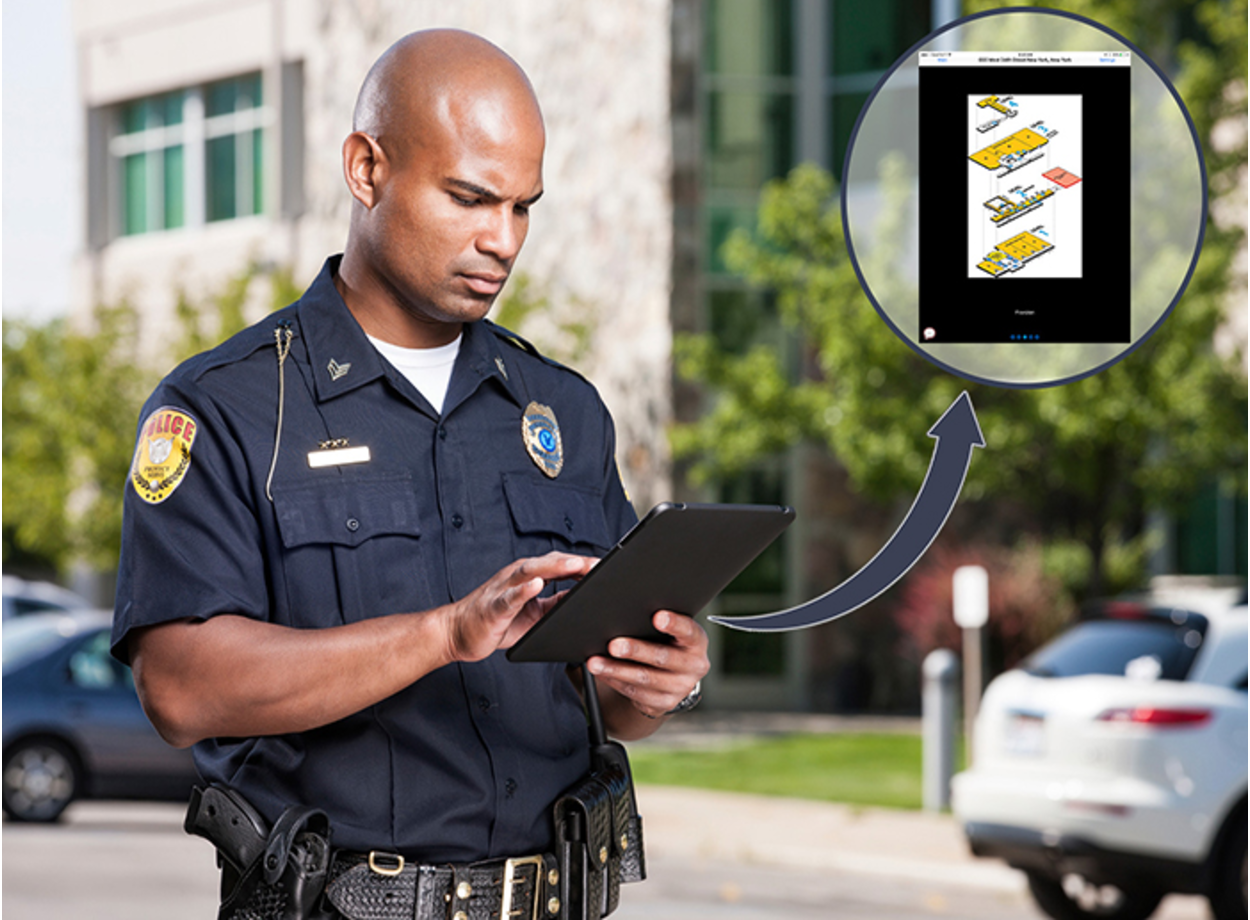On an average fall day, Ottawa Professional Firefighter’s Association Captain Vic Dillabaugh found himself racing towards the University of Ottawa alongside 10 other members of a hazardous materials team, responding to an ammonia leak caused by intentional vandalism.
It was just a drill, but Dillabaugh and his team treat the situation every bit as seriously as if it were really taking place. The scenario placed one person down in the Minto Sports Plex, where the leak was taking place. Rescuing that victim became the top priority of the drill. But the top priority of doing the drill itself is to test a new technology developed by Ottawa-based Advance Property eXposure Inc. (APX), delivering vital information about the building and the situation to first responders via smartphones and tablets.
Looking at the Minto Sports Plex floorplan on his iPad and APX’s Building Tactical Information System, Dillabaugh could quickly identify the area of the building where the ammonia was stored.
“Right away I’d take 50 feet around where the ammonia is and I’d say until we’re properly suited up, no one can go in there,” he says. “We established an exclusion zone, we established our entry point, and we established our egress point.”
Dillabaugh was able to collaborate on his tablet with members of the University security team to identify what area of the building had already been evacuated, and what areas hadn’t. A university engineer was also able to use a tablet to show the firefighters where the shut-off valves for the ammonia were located, even while the rescue was taking place.
“Without APX we’d be going by our memory of the building… and if I’m going across the city I might not have a good understanding of all that,” Dillabaugh says. “This is a great help to us.”

Ottawa Firefighters is just one of the first responder teams that are either piloting APX software or in discussions with the company. Founded in 2013 by its president, Paul Martin, APX was inspired by an idea the Ontario Provincial Police put forward – that every officer should be getting a smart device to receive contextual information. Today, APX has four clients, but Martin expects to scale his business quickly as efforts to modernize technology for first responder organizations across North America gain steam.
“This technology wasn’t available two years ago and we’ve yet to see anyone doing what we’re doing,” he says. “We believe this is the beginning of the transformation of governments moving a to a mobile-first technology platform.”
The software has multiple components to it that link first responders to dispatchers for a contextual and multimedia-rich collaboration. There’s an Android or iOS app that serves up information to the frontline emergency workers – information might include a satellite image of a building, the floorplans, details about where to shut off gas or electricity, and evacuation routes. The app connects to a content management system that stores all of that content, which must be collected by the city. A dispatcher can push out the information to police devices from a cloud-hosted dashboard, using SMS or email channels.
Cities are already mandated to collect and digitize information about buildings for the purposes of emergency preparedness, Martin says. “None of them have been able to collect it because it’s impossible to do with a pen and paper.”
APX has an information collection function on its app that changes that. Dillabaugh and his team tried it first hand during their pre-planning procedure at the University of Ottawa.
“These pre-plans usually limit you to what you recall, or what you type into the computer, but it’s a static sort of thing,” he explains. “What this software does is enable us to be more mobile and use it in a scenario where we’re bringing in multiple agencies.”
APX is storing the digitized information with Microsoft Azure’s public cloud infrastructure, Martin says, based in the Toronto data centre for Canadian customers to maintain data residency in the country. APX has taken multiple security measures to make sure that no one device could access the entire store of information, and that communications are encrypted. As a further security measure, police devices are wiped of information after an incident has concluded.
Martin is positioning APX to scale business quickly, anticipating interest from first responder agencies across North America. He points to the First Responder Network Authority (FirstNet), the multi-billion dollar wireless broadband wireless network dedicated to public safety that was signed into law in the U.S. in 2012. After an RFP went out last March, AT&T won the contract to build out the network and consultations are currently ongoing across the States for the project.
Modernization of emergency services are ramping up closer to home too. Martin says that APX received almost $700,000 in funding through the Canadian Safety and Security program to do a beta deployment in Prince Albert Saskatchewan.

In Toronto, the Toronto Police Service Transformational Task Force released an action plan in January calling for neighbourhood officers to have mobile devices to give them access to data, information, and software within two to three years. There are 330,000 buildings in Toronto that should be digitized, Martin says, and APX recently worked with a crew to collect the data for seven in just four hours.
Still, Dillabaugh sees that collecting the relevant information for first responders as a potential hurdle to adoption for organizations in general.
“The only weakness to the system is the personnel that are putting information in,” he says. “If they are thorough, this is a very useful system for police and for us.”
For Martin, he’s sure this is the first step towards widespread adoption.
“What we’re starting to see is that governments that are far behind in technology are beginning to see there’s an opportunity to get there,” he says. “We think that’s the entry point to cities, to get them adopting and using smart mobile technology on the front lines of every department for every service.”
APX’s software is licenced on a subscription basis at $20-$35 per user per month based on the options, Martin says.
Whether it gets adopted by the Ottawa Firefighters isn’t up to Dillabaugh, that’s a decision for the Deputy Chief. “Good luck getting the City of Ottawa to buy it, because we’re all under fiscal constraints,” he says. “Would it be useful, Absolutely, I think so.”
During the pilot test at the University of Ottawa, the software helped his team rescue an imagined victim. In the future, it might safe a real life.





